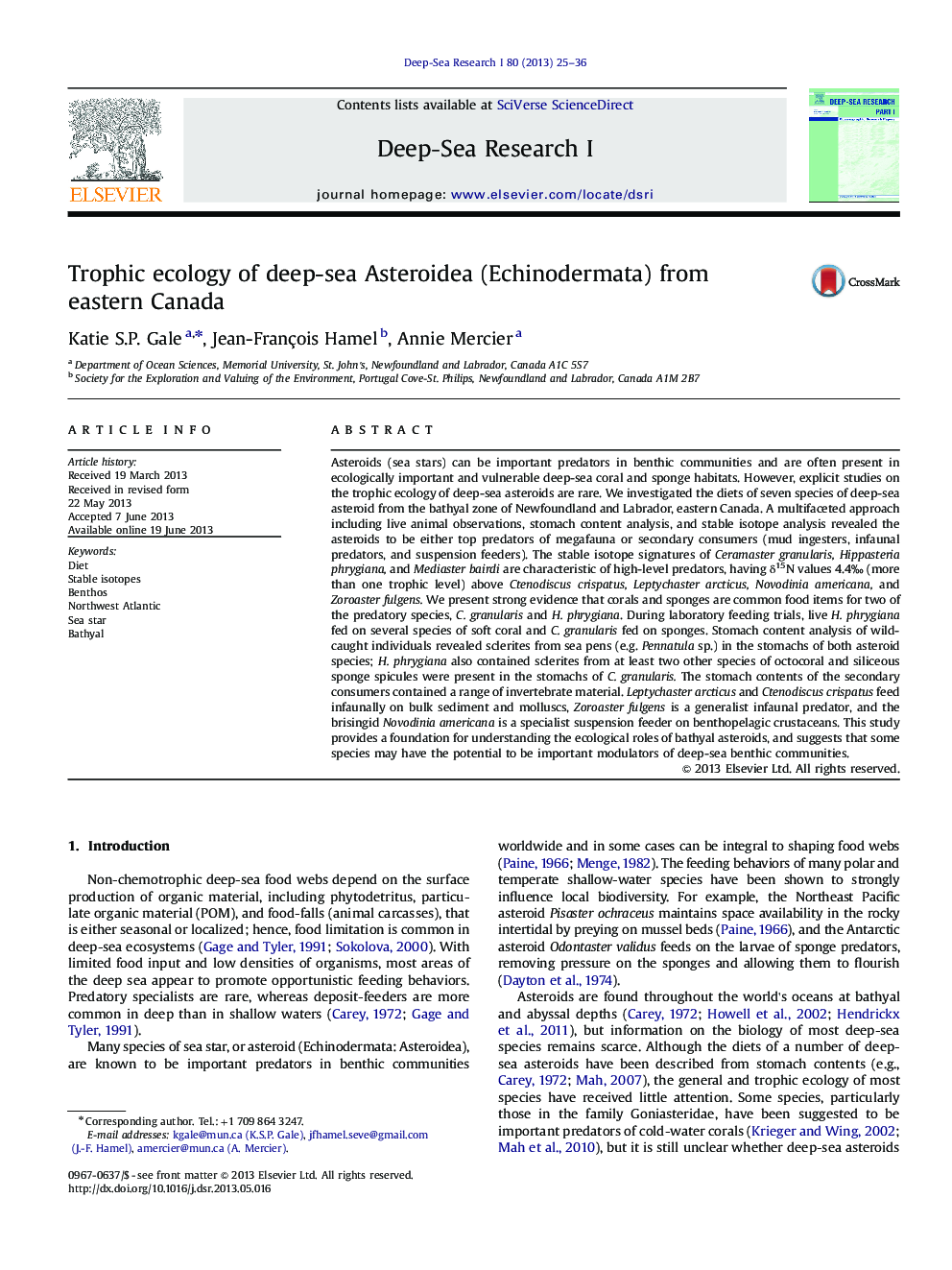| Article ID | Journal | Published Year | Pages | File Type |
|---|---|---|---|---|
| 4534566 | Deep Sea Research Part I: Oceanographic Research Papers | 2013 | 12 Pages |
•We use a multifaceted approach to determine the diets of seven species of deep-sea asteroid from eastern Canada.•Stable isotopes and stomach contents partition species into top predators of megafauna, lower-level predators of macrofauna, and suspension feeders.•Stomach contents and experiments with live specimens reveal predation on corals and sponges.•In situ imagery confirms that asteroids likely have important and varied ecological roles in deep-sea benthic communities.
Asteroids (sea stars) can be important predators in benthic communities and are often present in ecologically important and vulnerable deep-sea coral and sponge habitats. However, explicit studies on the trophic ecology of deep-sea asteroids are rare. We investigated the diets of seven species of deep-sea asteroid from the bathyal zone of Newfoundland and Labrador, eastern Canada. A multifaceted approach including live animal observations, stomach content analysis, and stable isotope analysis revealed the asteroids to be either top predators of megafauna or secondary consumers (mud ingesters, infaunal predators, and suspension feeders). The stable isotope signatures of Ceramaster granularis, Hippasteria phrygiana, and Mediaster bairdi are characteristic of high-level predators, having δ15N values 4.4‰ (more than one trophic level) above Ctenodiscus crispatus, Leptychaster arcticus, Novodinia americana, and Zoroaster fulgens. We present strong evidence that corals and sponges are common food items for two of the predatory species, C. granularis and H. phrygiana. During laboratory feeding trials, live H. phrygiana fed on several species of soft coral and C. granularis fed on sponges. Stomach content analysis of wild-caught individuals revealed sclerites from sea pens (e.g. Pennatula sp.) in the stomachs of both asteroid species; H. phrygiana also contained sclerites from at least two other species of octocoral and siliceous sponge spicules were present in the stomachs of C. granularis. The stomach contents of the secondary consumers contained a range of invertebrate material. Leptychaster arcticus and Ctenodiscus crispatus feed infaunally on bulk sediment and molluscs, Zoroaster fulgens is a generalist infaunal predator, and the brisingid Novodinia americana is a specialist suspension feeder on benthopelagic crustaceans. This study provides a foundation for understanding the ecological roles of bathyal asteroids, and suggests that some species may have the potential to be important modulators of deep-sea benthic communities.
